Are you often struggling with ranking your articles on Google?
Discover an easy copywriting technique for SEO.
FAQ Blog Post.
- A copywriting technique organized around questions and answers
- Tailored to grab your audience’s attention
- And super simple to create
In this article, you will learn a step by step approach to create your first FAQ Blog Post
- How to gather content ideas
- How to organize your copy
- How to keep your content always up-to-date
Also, you will see that with a FAQ Blog post or Q&A Blog post, you will get fast SEO results, be visible for a broad set of questions and grow your organic traffic steadily.
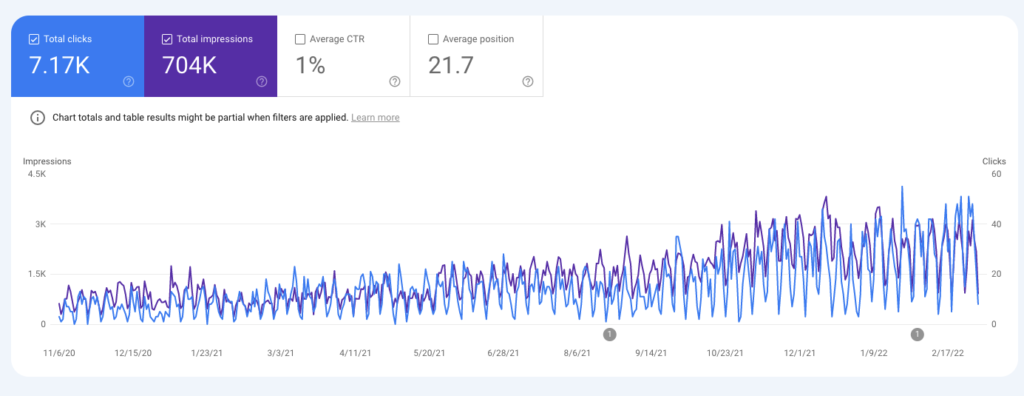
Table of Contents
What is a FAQ Blog Post?
A FAQ Blog post is a content format built around questions and answers and located within your blog section.
Such content must provide a complete view of a topic by answering the most frequent questions of your target audience.
To be more precise and clear any doubt, I’m not speaking about a Frequently Asked Question page.
A FAQ page generally covers questions about your products or services. Also, a FAQ page has usually a different UX than a blog post.
My definition of a FAQ Blog Post is an article with a long list of questions and their answers about a topic.
FAQ Blog Posts follow an SEO blog post template of questions and answers. They can also be called Q&A Blog Posts.
If you want some examples of FAQ Blog Posts, here you go:
If the definition of a FAQ Blog Post is clear now, let’s move on and explain why you should use this content format in your SEO and content strategy.
Why you must use FAQ Blog Posts in your SEO and content strategy
Educate your audience and win their trust
A FAQ Blog Post is structured around questions and answers. It is thought to help and educate your audience about a specific topic.
FAQ Blog Post are powerful content format to be visible at the top of the content marketing funnel or during the awareness stage of your audience if we speak about inbound marketing.
The impact could be to be the first touch with an audience looking for knowledge.
By educating your audience in a meaningful way, you win their trust.
It is also called Education-Based Marketing.
We know the importance of the first touch with a company or a brand, especially when you have learned something from it.
But of course, it’s not only by creating such a page that you will pop up at the first position on Google.
It will be too easy.
Google turns into an answer engine
However, leveraging this questions/answer format is good for SEO as Google turns more and more into an answer engine.
The reason is definitely that we (users of Google) use more and more questions when searching for something.
A study from 2017 shows that 8% of search queries are questions.
Also, Google is showing more and more the “People Also Ask” box at the top of the search or the position zero with the featured snippet providing a direct answer to a question in the SERP.
You might increase your chance to win these spots on the SERP by using the question/answer format.

Cover a wider search intent
Later in the article, we will detail the approach to creating such a FAQ-Style Blog Post.
You will see that as it includes a wide range of questions on a topic, you can also cover a significant search intent.
In other words, you can be visible for the questions around “what“, “why“, “how“, and more alternatives and long-tail queries.
I’ve tried several times such content format, and there were performing pretty well over time (as you can see in the graphic below).
They help increase the visibility of a company or brand and even unveil new questions from your audience (more about this later).

Are you convinced that it is a great content format? Let me show you the best practices to create your next FAQ Blog Post.
How to find content ideas for your FAQ Blog Post?
As when you are preparing a blog post, you need content ideas. In our case, we need questions ideas.
It is necessary to keep in mind while searching for ideas that your audience might have no expertise on the topic.
So don’t hesitate to cover basic questions as well.
Let’s go through the main tactics or tools to get questions ideas for your blog post.
Start with your own expertise
To make something unique, start by asking yourself what could be the most typical questions about a topic.
It sounds silly, but it is always an excellent approach to start with your own knowledge before relying on third-party tools or sources.
Especially when more and more people rely on AI to get ideas, using your brain might produce an incredible outcome, something more original.
Take a paper or a digital version of it, and write down your questions.
Then move to the next step.
Ask your coworkers and sales team
If you are not working as a freelance, you might have several colleagues in your company.
Grab the sales team and ask them to tell you the last questions they received from prospects and customers.
You can even ask them to share some emails exchanged with prospects or questions from RFP.
On top of this, you could ask to participate in a sales presentation. Wait for the Q&A sessions and list all the questions from the audience.
This is a goldmine.
You will find the best questions ever, totally aligned with your target audience’s concerns.
Discuss with other departments within your company such as the customer services or the product development. The customer-facing people might be the best source of content ideas.
Survey your customers
You won’t survey your customer each time you write a blog post.
But the marketing department or R&D often survey customers to improve the quality of their services or products.
Scrape the best information from these surveys to understand common pain points and related questions.
Attend webinars and list the questions
I’ve done this several times, and it is working pretty well: Attending a webinar and collecting all the questions from the audience (and the answers from the presenters).
You will get incredible results, particularly if you attend a product launch and want to write about something new.
At the end of the session, you will have a lot of fresh ideas from an audience looking for information.
The questions collected will be aligned with the questions people will type on Google. Trust me.
Check Google and People Also Ask
Analyzing the SERP will give you also great insights.
Enter your topic in Google and look at the People Also Ask (PAA) box to get questions ideas.
Leverage tools such as Also Asked to get more data from the PAA.
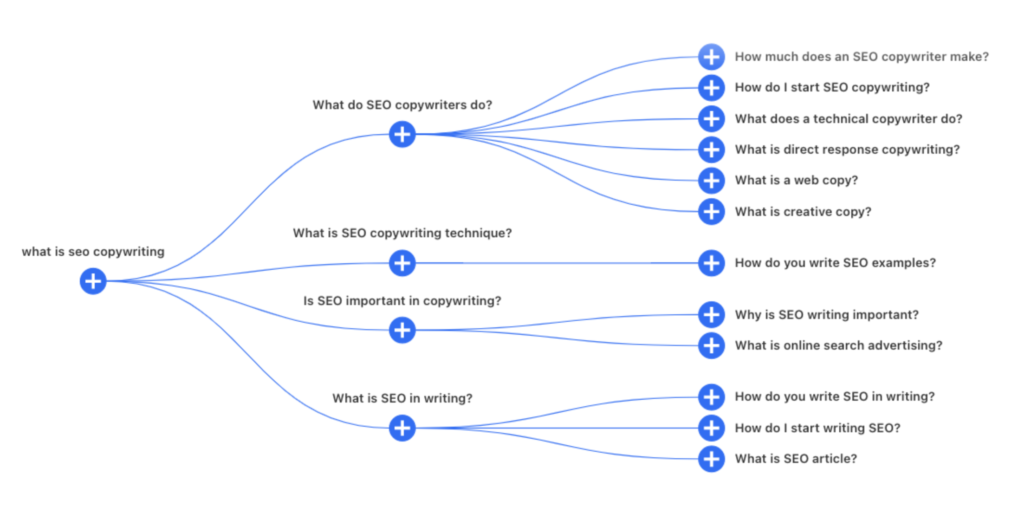
Extract questions found in the top-ranking pages
While analyzing the SERP, you should also look at the top-ranking pages. Or let’s be bold, at the 100 first pages ranking on Google.
These articles will also contain interesting questions (and answers). You might find the questions in the headings (H1, H2, H3).
With thruuu, you can automate the process and extract (in one click) all the questions found in the heading of every article on the SERP.
Then, you only need to copy the questions to your clipboard and outline your content.
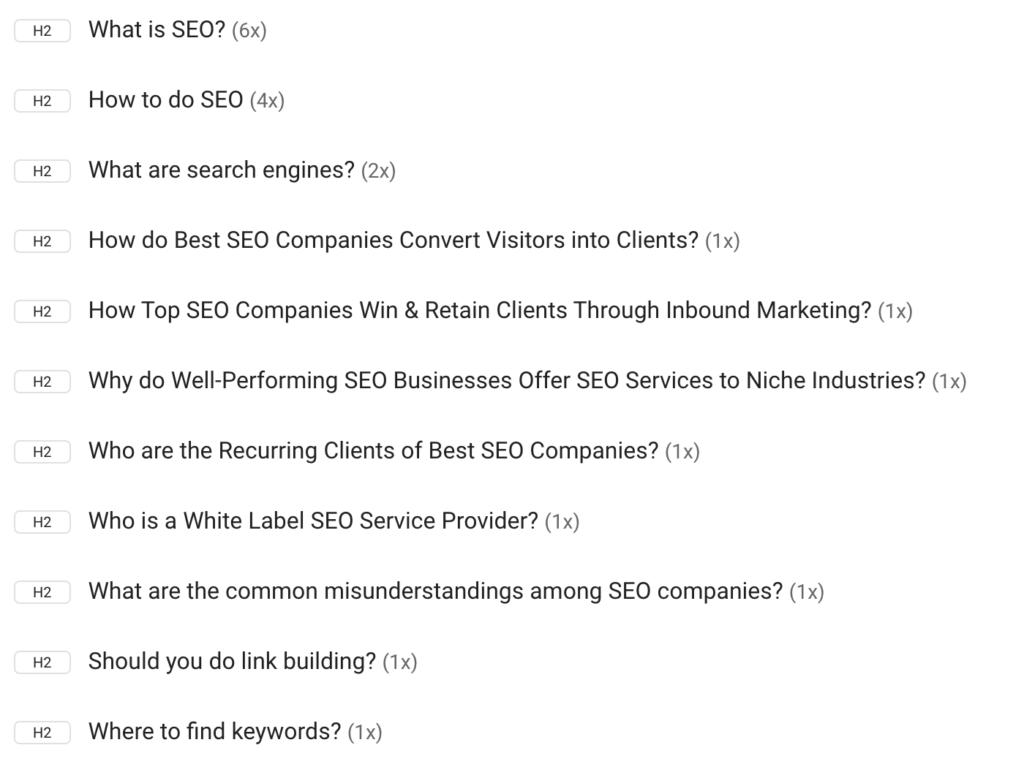
Grab the questions from the blog post comment
As you are looking at your competitors, maybe their pages have a comment section and, even better, some questions there.
Questions left by people are so precious.
Why is someone leaving a question? Because something is not clear or simply missing.
The questions found in the comments shows a content gap.
With thruuu, you can also extract all the questions found in the blog. You have to keep the best and add it to your content brief.
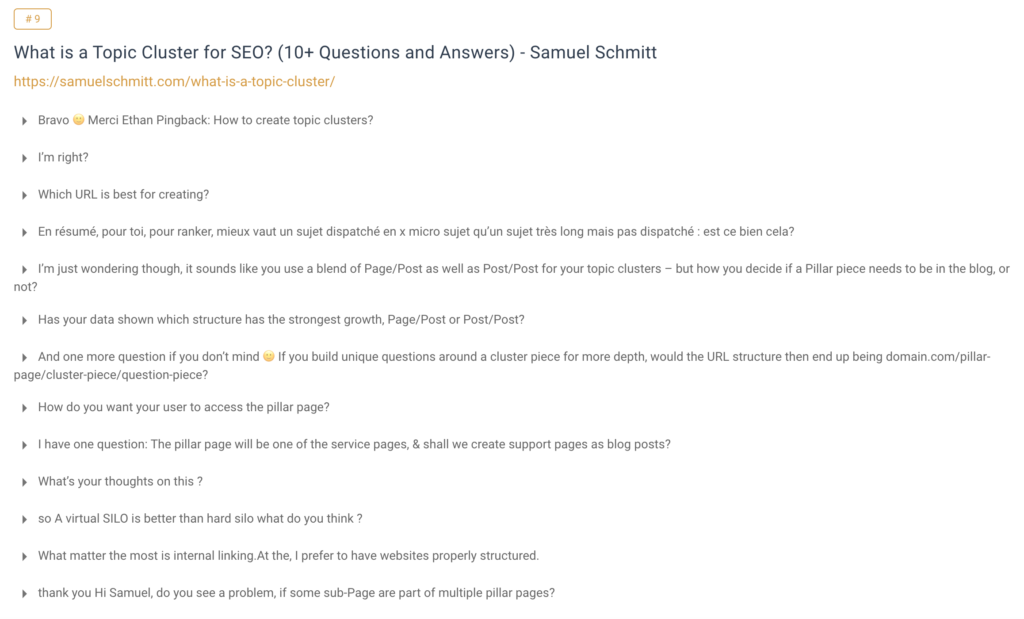
Scrape questions from FAQ Schema
FAQ Page Schema are meta-information hidden on a web page and are not directly visible from a reader’s perspective.
Website owners use this information to give more context about a page to search engines.
The FAQ Page Schema is made of questions and answers.
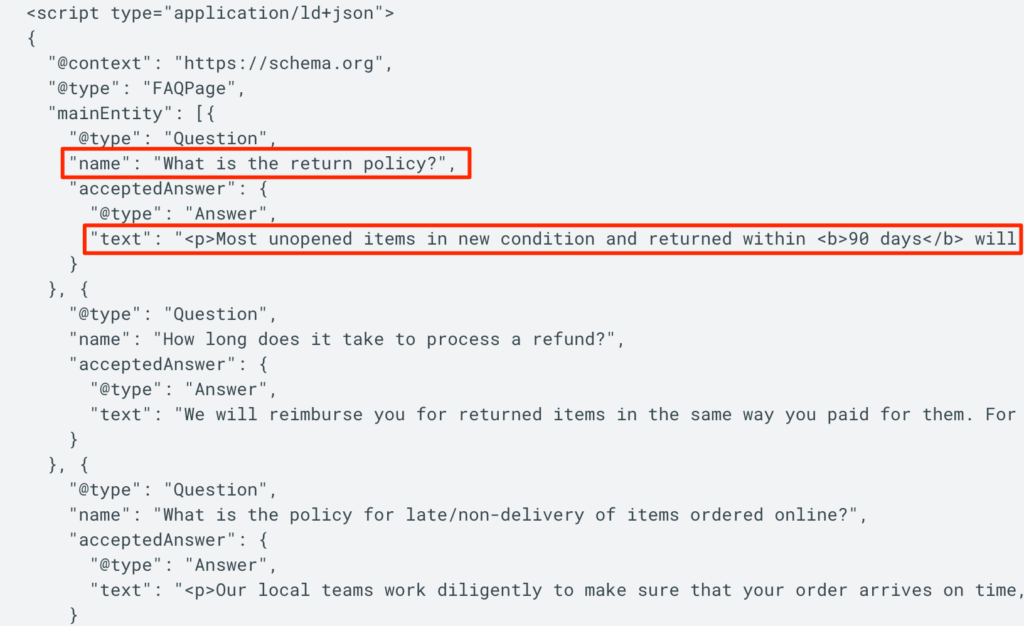
With thruuu, you can get these FAQ schemas at scale. You won’t need to explore each individual page and analyse the HTML code by yourself.
You get another great source of information in one click.
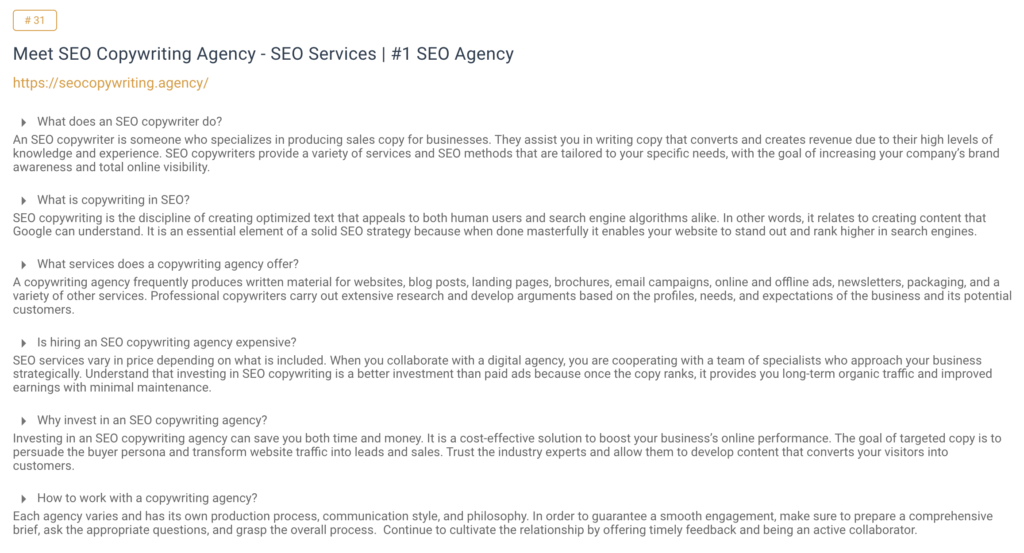
Scan social media
Similar to the blog post comment, social media is full of questions.
You can monitor Twitter for a specific topic or hashtag or browse Reddit or Quora, where you will find interesting discussions and open questions.
By using the Google site search operator, you could find many question ideas related to your main topic on social media.
For instance, the image below displays questions related to “What is SEO” found on the website Quora. The search operator is site:quora.com “What is SEO”.
Then you only need to grab the best questions.
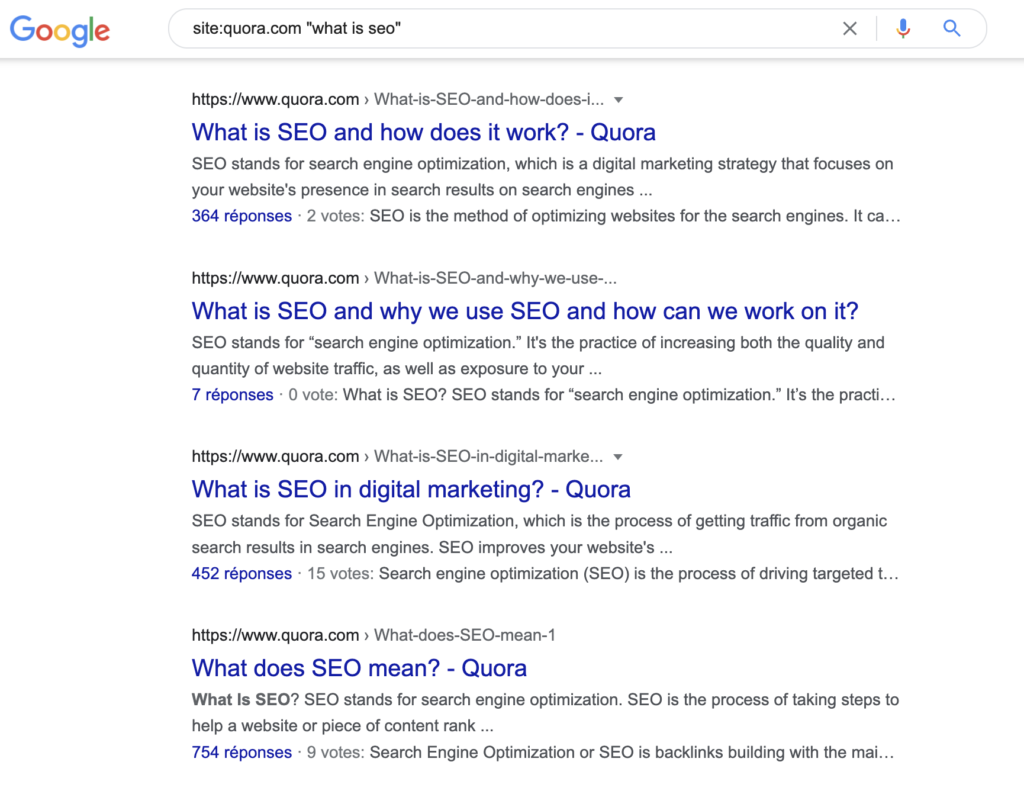
How to create an SEO-Friendly FAQ Blog Post?
Now that you have consolidated a list of questions, it’s time to shape your next piece of content and create an excellent FAQ Blog Post.
Here are some pieces of advice to structure your article correctly.
One H2, one question
Organize your article with headings and use H2 tags to display your questions.
The title of your article will be in the unique H1 and could also be a question representing the main topic.
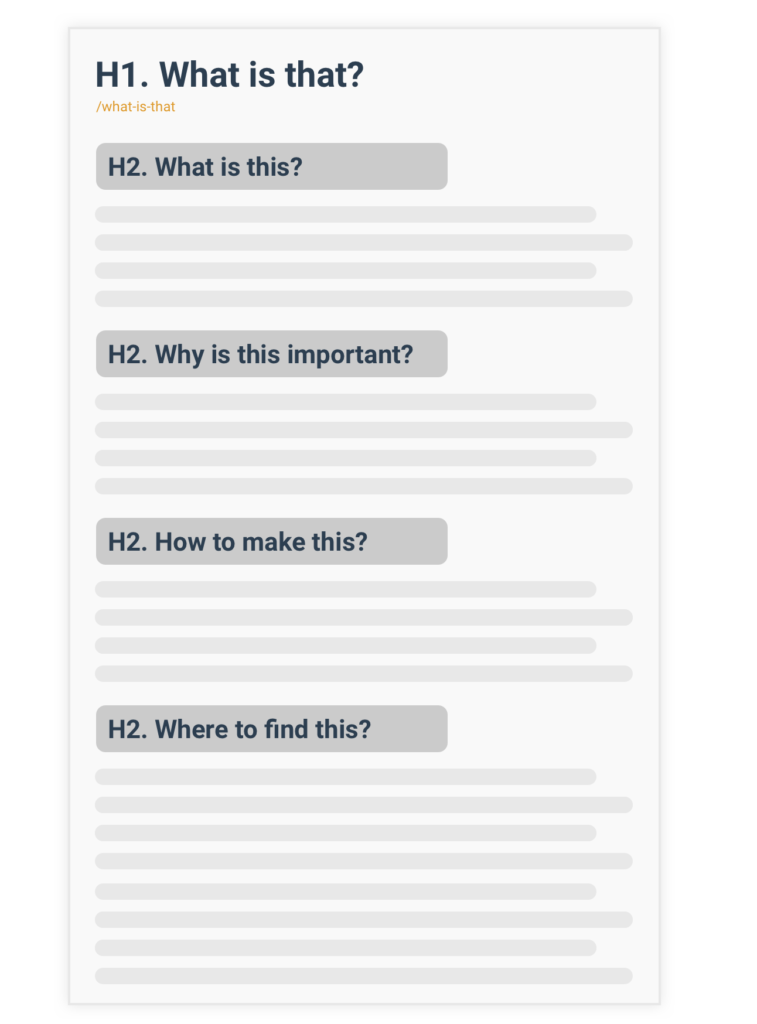
Stay concise and complete
Answer each question concisely and completely. In other terms, don’t add extra fluff.
Also, start the first paragraph (of each answer) with a clear and direct answer to the question. It might increase your chance to win a featured snippet.
Then, if needed, extend your answer with more details, as seen in the example below.
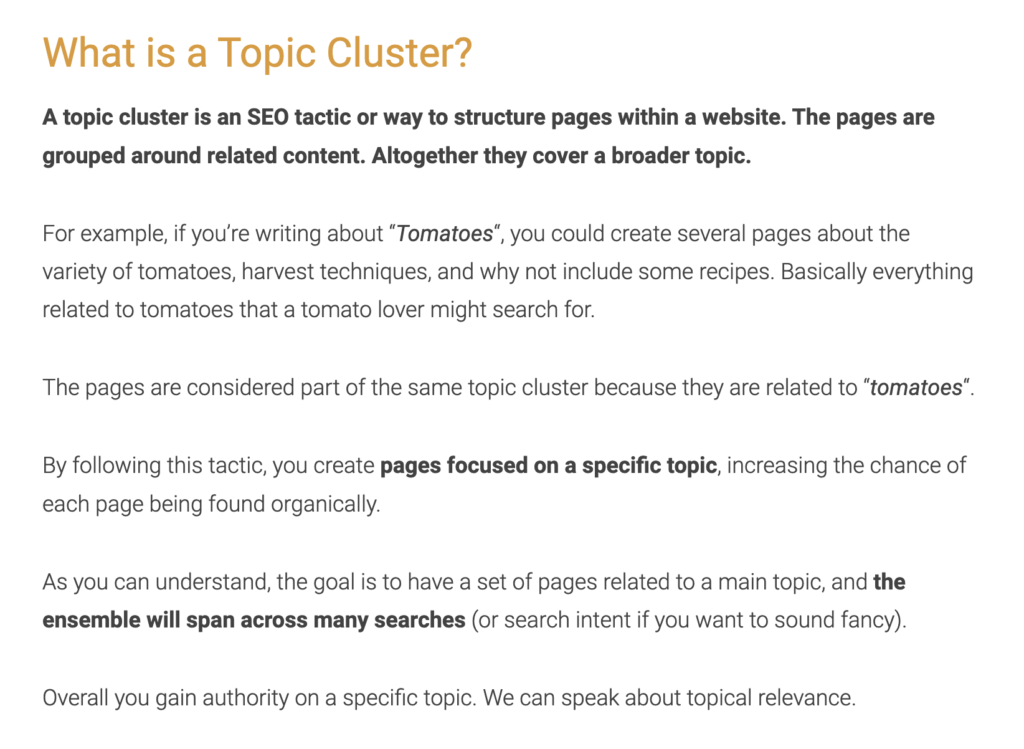
Use a table of content
Table of content is a good practice of SEO Copywriting and list the main topics covered by an article. In our case, it will list all the questions.
Your readers will get an excellent overview of your article’s content, and it will invite them to read further.
If you don’t use a table of content in your blog, you can start your summary by listing some of the main questions.
Link questions to more detailed articles
You could link each question section of your FAQ Blog post to a more in-depth and related article on your blog.
By following this internal linking approach, you will create a content hub with pages that are semantically about the same topic and build up some authority.
Internal linking is often overlooked or set up haphazardly. Now you have a structured approach.
As you can see in the example below, a concise answer is given and links to an article exploring the topic in more detail.

Finally, your FAQ Blog Post could become your content hub’s pillar page redirecting to subpages of your topic cluster.
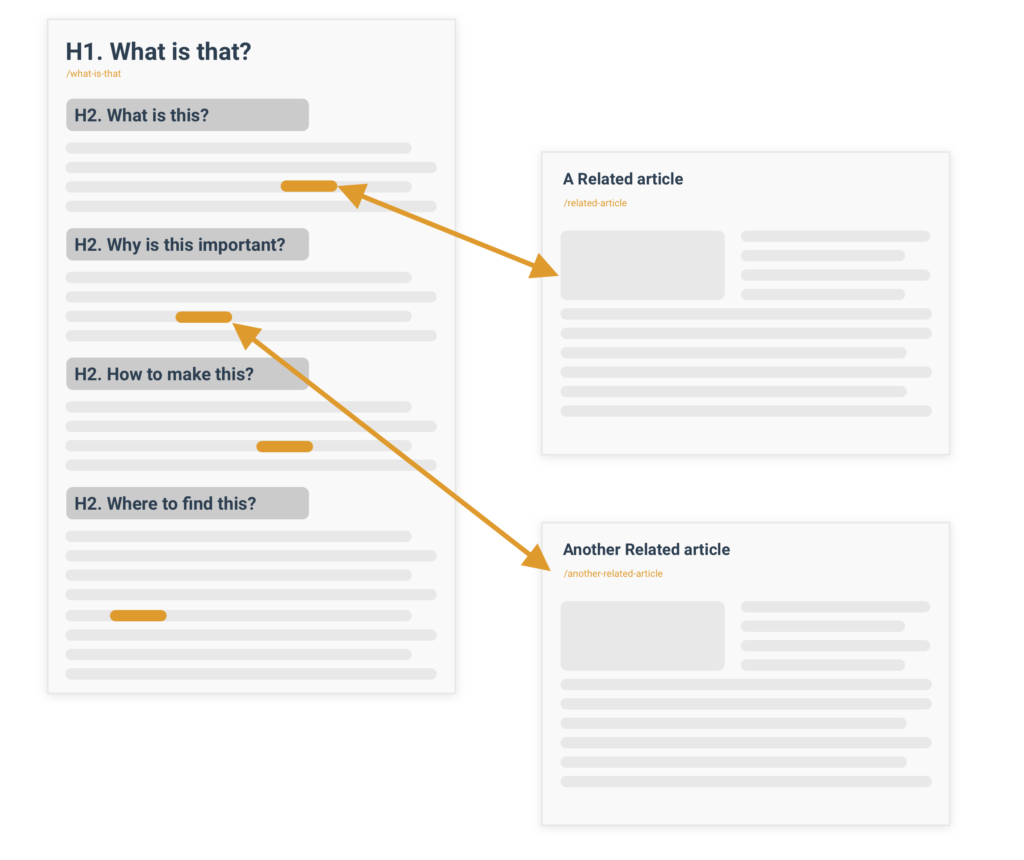
Mark up your page with structured data
Structured data are meta information within the HTML code of your page that can be read by a search engine such as Google.
In particular, one structured data is appropriate for FAQ Blog Post: The FAQ Page Schema. Learn more about this format here.
It is straightforward to add this structured data to your page:
- Use a FAQPage Schema Generator
- Enter each question and the first paragraph of your answer
- Copy the generated code
- Embed it in your page with an HTML block or component
Publish and keep on adding new questions
Once your page is published, don’t forget to update it every 3 to 6 months and add new questions.
To find new questions ideas, you can now look at the data from the Google Search Console.
You will find what questions lead to an impression or a click on your page. If the question is not yet in your content, add a new section and provide a meaningful answer.
To find out all the questions related to your article in Google Search Console, do the following:
- Go to Performance / Search results
- Create a filter Page and enter the URL of your page to display only the keywords associated with this one
- Create a filter Query with the custom regex ^(who|what|where|when|why|how)[” “]
You will get a beautiful list of questions. Select the missing ones.
A quick tip: I advise you to prioritize them based on the impression metric.
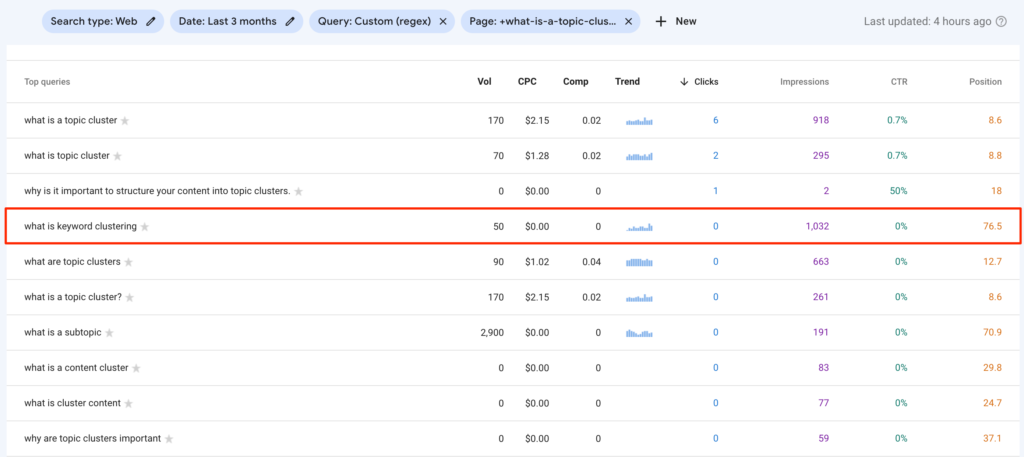
In a nutshell
In my opinion, FAQ Blog Post is an excellent content format and is relatively easy to do.
Even if you are a beginner in SEO and Copywriting, you can quickly compile a list of questions and short answers.
Your new content will be ready in a couple of hours, and the traffic will follow.
Also, all the best practices of SEO copywriting apply to this format.
To go further and make more comprehensive content, I will always recommend doing a thorough SERP Analysis.
Empower Your Content Team
Our end-to-end content optimization solution empowers your team to crack the Google algorithm, craft exceptional content, and achieve remarkable organic search results.
